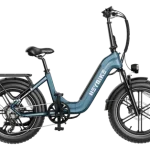Visa Regulations and Work Opportunities
Living in the U.S. as an international student requires following strict visa rules. The F1 visa allows students to work on-campus for up to 20 hours per week during the school term and full-time during breaks. Some students apply for Optional Practical Training (OPT), which lets them work for a certain period after graduation in a field related to their studies. Others may qualify for Curricular Practical Training (CPT), allowing them to gain work experience while still studying.
For students on a J1 visa, work options are more limited. They can participate in training programs and internships under specific conditions. Visa-related challenges can be complex, and an immigration attorney can help students understand their rights, apply for extensions, and explore work opportunities legally.
Education and University Life
Many international students in the U.S. enroll in universities through the F1 visa program, which allows them to study full-time at accredited institutions. Some students come under student exchange programs on a J1 visa, which provides cultural and educational exchange opportunities. In 2025, universities continue to offer strong academic programs and student support services, making it easier for international students to succeed.
Most universities have international student offices that provide guidance on legal requirements, work opportunities, and social integration. Many schools also offer mentoring programs where new students are paired with local or experienced students to help them adjust.
Cost of Living and Financial Planning
The cost of living for international students varies depending on the city and university. Large cities like New York, Los Angeles, and San Francisco have high living expenses, while smaller cities and towns offer more affordable options. Typical expenses include:
- Tuition fees (which can range from $10,000 to $50,000 per year)
- Housing (on-campus dorms or off-campus apartments)
- Food and daily expenses
- Health insurance (required for most students)
- Transportation (public transport or car ownership)
Many students seek scholarships, assistantships, or part-time jobs to help cover costs. Universities often offer merit-based scholarships for international students, and some states provide financial aid programs as well.
Housing Options
International students can choose from different housing options:
- On-campus housing: Most universities provide dormitories, which offer a convenient and safe environment.
- Off-campus apartments: Renting an apartment with roommates is common and can be more cost-effective.
- Homestay programs: Some students live with American families to experience local culture and improve their English skills.
Finding housing can be challenging, so students are encouraged to research their options early and consider factors such as distance from campus, rent costs, and transportation access.
Cultural Adjustment and Social Life
Adapting to life in the U.S. can be both exciting and challenging. Cultural differences, language barriers, and homesickness are common issues for international students. However, universities provide support systems, including:
- Student clubs and organizations: Many universities have cultural clubs where students can meet others from their home country or with similar interests.
- Language support programs: English conversation programs help non-native speakers improve their language skills.
- Counseling services: Mental health and wellness support is available to help students adjust to their new environment.
Making friends and engaging in local activities can help international students feel more comfortable in their new surroundings. Many students also travel within the U.S. during holidays to explore different states and cultures.
Healthcare and Insurance
Health insurance is mandatory for international students in the U.S. Many universities offer their own health insurance plans, while others allow students to choose private options. Healthcare in the U.S. can be expensive, so having the right insurance plan is crucial. Some key aspects of healthcare for international students include:
- University health centers: Many campuses have clinics that provide medical care at lower costs.
- Emergency care: Hospitals provide emergency services, but they can be expensive without insurance.
- Preventive care: Regular check-ups and vaccinations are part of student healthcare plans.
Transportation and Mobility
Getting around in the U.S. depends on the city. In major cities like New York, Chicago, and Boston, public transportation is widely available. In smaller towns, students often rely on bicycles or cars. Many students apply for a driver’s license and buy used cars for convenience. Ride-sharing services like Uber and Lyft are also popular transportation options.
Career Prospects After Graduation
Many international students hope to work in the U.S. after graduation. The OPT program allows F1 visa holders to stay and work for up to 12 months after graduation, and STEM (Science, Technology, Engineering, Mathematics) students may qualify for an extension of up to 24 months. Some graduates seek employer sponsorship for an H1B work visa, which can lead to long-term employment.
For J1 visa holders, work opportunities after graduation are more limited, as they may be required to return to their home country before applying for a work visa.
Conclusion
Living in the U.S. as an international student in 2025 comes with opportunities and challenges. From visa regulations and financial concerns to cultural adaptation and career prospects, students must navigate many aspects of life abroad. However, with proper planning, support from universities, and legal guidance, international students can make the most of their education and experience in the United States.







